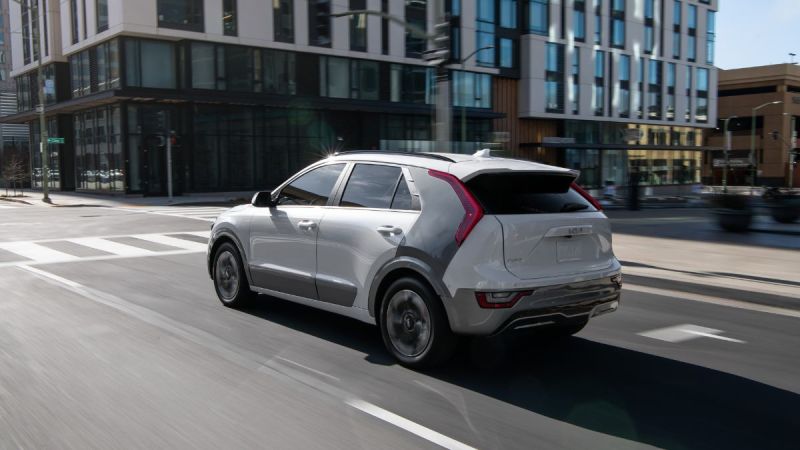Let’s consider some context that others may not be paying attention to. When Kia announced the pricing of its 2023 Niro EV, many media sources (and this journalist included) were quick to point out the loss of the U.S. federal tax incentive may hurt sales or otherwise make the Niro less affordable to shoppers looking for a more reasonably priced EV. The average price for a new EV in the U.S. according to YAA was an eye watering $65,291 last month.
Thus, as YAA points out, the Kia Niro actually starts well below that average price of a new EV and actually well below the average price of any type of new car, gasoline powered included, at $48,094. Furthermore, when we look back to 2017 when the more budget friendly Chevy Bolt EV premiered, we can see that its price wasn’t that much lower than what the 2023 Niro is going on sale for ($37,495 versus $39,450).
That’s less than $2,000 difference between two vehicles that are of similar size, class, and capability. It is actually cheaper if you consider the impact of 5 years worth of inflation, which apparently works out to the 2017 Bolt costing over $45,000 if it went on sale today, given the change in buying power of a dollar between 2017 and 2022.
But in 2017, the Chevy Bolt was eligible for federal tax incentives of up to $7,500 and ridiculous dealer markups were at least a little less common. In fact, buyers shopping for new Chevy EVs near the end of the year were often able to get additional manufacturer incentives. So, the real prices that shoppers may have paid for a Bolt EV back in 2017 ranged from much lower than what shoppers are likely to get a Kia Niro for today, to about the same price. Although, while shoppers may be able to find new Kia Niro EVs at MSRP from some dealers, it is also quite possible that they will see additional markup applied too. Should that discourage people who want a lower priced EV from considering the Niro?
Not at all, especially considering the features and functionality that the Niro offers. The 2023 Niro EV has an EPA-estimated range of 253 miles and can charge at a faster rate than older models (and faster than the Chevy Bolt, too) at up to 85 kW. That equates to a 10 to 80 percent charge in under 45 minutes. By no means is that as fast as more costly EVs are capable of charging, but it is better than others at the lowest end of the pricing spectrum.
The Niro also comes standard with two large (10.25 inch) instrument and infotainment screens as well as collision avoidance and driver assist features that may not be standard on more expensive vehicles, electric or otherwise, including: Blind-Spot Collision-Avoidance with Rear Cross Traffic Collision Avoidance, Forward Collision-Avoidance Assist with Pedestrian Detection and Junction Turning, and Lane Following Assist.
As you can see from this partial list, Kia has an impressive set of standard features. Is it enough to justify the price point though? Please leave your questions or comments below.
Image courtesy of Kia.
Justin Hart has owned and driven electric vehicles for over 14 years, including a first generation Nissan LEAF, second generation Chevy Volt, Tesla Model 3, an electric bicycle and most recently a Kia Sorento PHEV. He is also an avid SUP rider, poet, photographer and wine lover. He enjoys taking long EV and PHEV road trips to beautiful and serene places with the people he loves. Follow Justin on Twitter for daily KIA EV news coverage.











